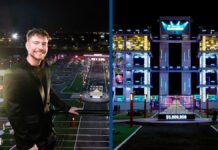In an exciting development for the future of space exploration, NASA has announced the selection of 15 groundbreaking ideas for its NASA Innovative Advanced Concepts (NIAC) program. This initiative is designed to nurture and develop cutting-edge concepts that could transform future missions, benefiting not only space exploration but also technology here on Earth. The 2025 Phase I awardees, chosen from various companies and institutions across the United States, showcase a diverse array of aerospace concepts that could revolutionize our understanding of space.
The NIAC program is pivotal in driving innovation within NASA by funding early-stage technology concept studies. These studies aim to explore the feasibility of new ideas that could be considered for future missions or even commercial applications. For the 2025 cycle, NASA has allocated a total of $2.625 million in grants to assess technologies that might one day enable groundbreaking aerospace missions.
According to Clayton Turner, associate administrator for NASA’s Space Technology Mission Directorate in Washington, "Our next steps and giant leaps rely on innovation, and the concepts born from NIAC can radically change how we explore deep space, work in low Earth orbit, and protect our home planet." Turner highlights the transformative potential of these concepts, which range from developing tiny robots capable of swimming through extraterrestrial oceans to constructing space habitats using fungi.
The newly selected projects include feasibility studies that aim to explore the Sun’s influence on our solar system, create sustainable lunar habitats from glass, and investigate Saturn’s icy moon, among other ambitious goals. It’s important to note that all NIAC projects are in the early stages of conceptual development and are not yet considered official NASA missions.
One of the intriguing proposals comes from Ryan Weed at Helicity Space LLC in Pasadena, California. His concept involves a constellation of spacecraft powered by the Helicity Drive, a compact fusion propulsion system. This technology could enable rapid, multi-directional exploration of the heliosphere and beyond, providing unprecedented insights into the Sun’s interaction with our solar system and interstellar space. If successful, fusion propulsion could significantly benefit deep space exploration, including potential manned missions to Mars.
Another compelling idea comes from Martin Bermudez at Skyeports LLC in Sacramento, California. He proposes the construction of a large-scale lunar glass habitat in a low-gravity environment, dubbed LUNGS (Lunar Glass Structure). This innovative approach involves melting lunar glass compounds to form a large spherical shell structure, offering a promising solution for establishing self-sustaining, large-scale habitats on the lunar surface.
Additionally, Justin Yim from the University of Illinois in Urbana introduces the LEAP (Legged Exploration Across the Plume) robot. This jumping robot is designed to explore Enceladus, a small, icy moon of Saturn covered in geysers. The LEAP robots could collect pristine, ocean-derived material directly from Enceladus’s jets and measure particle properties across multiple geysers by traveling from one to another.
John Nelson, program executive for NASA’s Innovative Advanced Concepts in Washington, emphasizes the importance of the NIAC program. "All advancements begin as an idea. The NIAC program allows NASA to invest in unique ideas enabling innovation and supporting the nation’s aerospace economy," he said. The NIAC researchers, known as fellows, will delve into the fundamental premises of their concepts, identify potential challenges, and explore opportunities to bring these ideas to fruition.
Beyond the projects mentioned above, several other selectees received 2025 NIAC Phase I grants. These include:
- Michael Hecht, Massachusetts Institute of Technology, Cambridge: EVE (Exploring Venus with Electrolysis)
- Selim Shahriar, Northwestern University, Evanston, Illinois: SUPREME-QG: Space-borne Ultra-Precise Measurement of the Equivalence Principle Signature of Quantum Gravity
- Phillip Ansell, University of Illinois, Urbana: Hy2PASS (Hydrogen Hybrid Power for Aviation Sustainable Systems)
- Ryan Benson, ThinkOrbital Inc., Boulder, Colorado: Construction Assembly Destination
- Gyula Greschik, Tentguild Engineering Co, Boulder, Colorado: The Ribbon: Structure Free Sail for Solar Polar Observation
- Marco Quadrelli, NASA’s Jet Propulsion Laboratory in Southern California: PULSAR: Planetary pULSe-tAkeR
- Ben Hockman, NASA’s Jet Propulsion Laboratory in Southern California: TOBIAS: Tethered Observatory for Balloon-based Imaging and Atmospheric Sampling
- Kimberly Weaver, NASA’s Goddard Space Flight Center in Greenbelt, Maryland: Beholding Black Hole Power with the Accretion Explorer Interferometer
- John Mather, NASA’s Goddard Space Flight Center in Greenbelt, Maryland: Inflatable Starshade for Earthlike Exoplanets
- Robert Hinshaw, NASA’s Ames Research Center in Moffett Field, California: MitoMars: Targeted Mitochondria Replacement Therapy to Boost Deep Space Endurance
- Christine Gregg, NASA’s Ames Research Center in Moffett Field, California: Dynamically Stable Large Space Structures via Architected Metamaterials
- Saurabh Vilekar, Precision Combustion, North Haven, Connecticut: Thermo-Photo-Catalysis of Water for Crewed Mars Transit Spacecraft Oxygen Supply
The NIAC program is funded by NASA’s Space Technology Mission Directorate, which is responsible for developing the agency’s new cross-cutting technologies and capabilities to fulfill both current and future missions. This initiative not only supports NASA’s mission but also drives innovation and economic growth in the aerospace sector.
For those interested in learning more about the NIAC program and its innovative projects, further information can be found on NASA’s official website: https://www.nasa.gov/niac.
This announcement marks a significant step forward in the realm of space exploration and technology. By fostering these innovative ideas, NASA continues to push the boundaries of what is possible, paving the way for future missions that could reshape our understanding of the universe. As these early-stage concepts progress, they hold the potential to unlock new frontiers in space exploration and inspire the next generation of scientists, engineers, and explorers.
For more Information, Refer to this article.


































